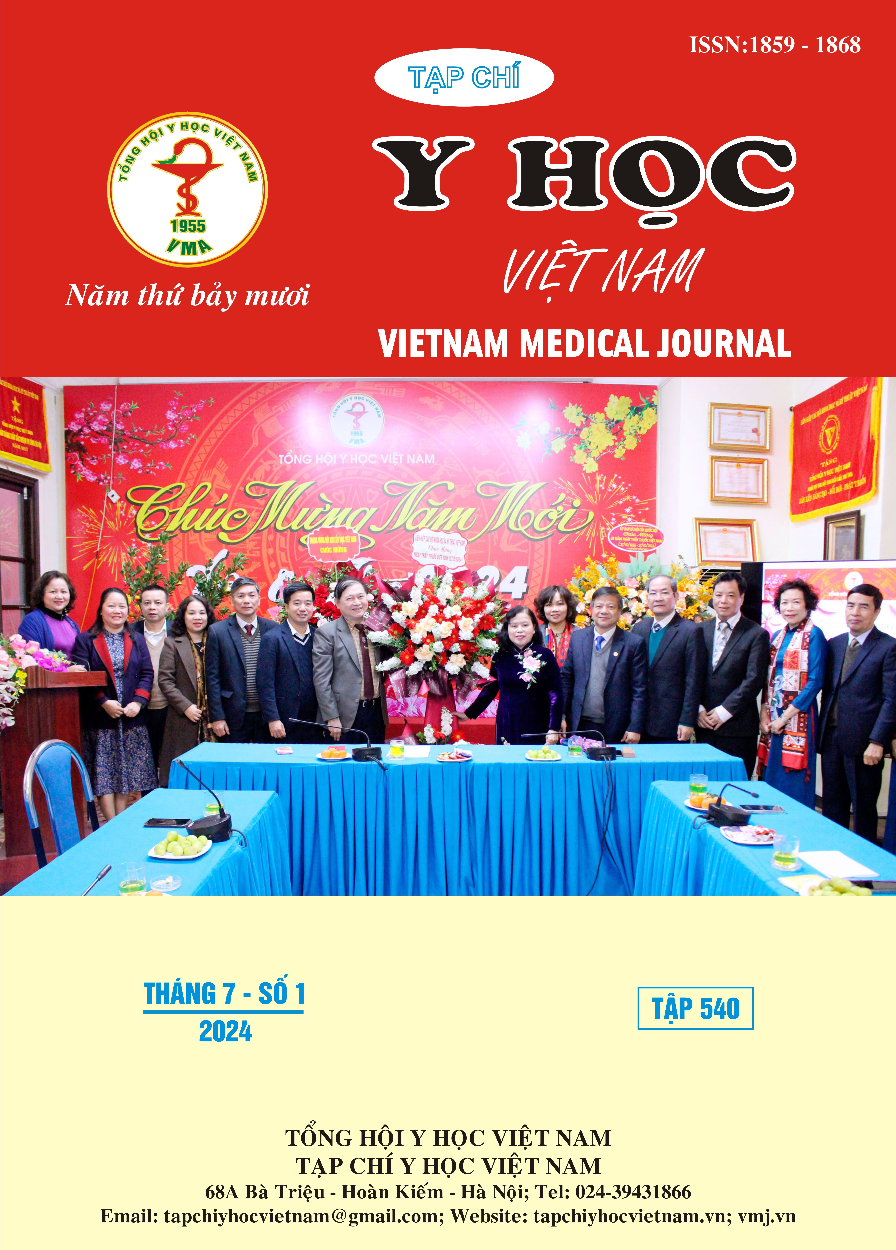THE IMPACT OF MALOCCLUSION ON THE QUALITY OF LIFE OF VIETNAMESE PEOPE AGED 18-25 YEARS OLD
Main Article Content
Abstract
Background: Vietnamese people have a high rate of malocclusion. Malocclusion can affect chewing function and smile aesthetics, thereby affecting daily life. Objective: This study aims to evaluate the current state of occlusion and the impact of malocclusion on the quality of life of Vietnamese people aged 18-25. Method: Cross-sectional descriptive study with the participation of 160 students from Hanoi National University from May 2023 to January 2024. Research subjects were examined and research dental casts were taken, evaluated according to the IOTN orthodontic treatment need index. Then, conduct a survey on the quality of life of this group of subjects through the OHIP-14 and WHOQOL-Bref questionnaires. The OHIP-14 includes 14 questions, divided into seven domains, which assess functional limitation, physical pain, psychological discomfort, physical disability, psychological disability, social disability, and handicap. WHOQOL-Bref includes 26 questions, divided into 4 domains: physical health, mental health, social relationship and environment. Two sets of questions rated on a Likert scale, each from 0–5. From there, evaluate the current status of malocclusion and its impact on quality of life. Result: There are a total of 160 students, 52 males accounting for 32.5% and 108 females accounting for 67.5%. Class I malocclusion accounts for the highest rate. The oval dental arch shape has the highest proportion, the lowest is the triangular dental arch. The need for orthodontic treatment at level 3 accounts for the highest percentage, the lowest at level 5. With the OHIP-14 questionnaire, the average quality of life score is 15.68 ± 8.09. Among the 7 research issues, psychology discomfort is the most common, least common is social disability. Class III malocclusion has a poorer quality of life than other types of malocclusion. In general, the group that severe/ extreme orthodontic treatment had a poorer quality of life than the group that no need to treatment, or mild needed orthodontic treatment. With the WHOQOL-Bref questionnaire, there is no difference between the quality of life between the two groups that do not need treatment and the group that needs treatment. The issue with the highest score was in the physical health domain, the issue with the lowest score in the social relationship domain. Conclusion: The rate of malocclusion among Vietnamese people aged 18-25 years old is relatively high, class III malocclusion and requiring orthodontic treatment have poorer oral-related quality of life than other groups, but overall quality of life is poor, general is not affected.
Article Details
Keywords
Malocclusion, quality of life, need for orthodontic treatment
References
2. Anneloes E G., Thoa C N., Dick J W. và cộng sự. (2012). A Vietnamese version of the 14-item oral health impact profile (OHIP-14VN). Open J Epidemiol, 2012.
3. Frejman M.W., Vargas I.A., Rösing C.K. và cộng sự. (2013). Dentofacial deformities are associated with lower degrees of self-esteem and higher impact on oral health-related quality of life: results from an observational study involving adults. J Oral Maxillofac Surg, 71(4), 763–767.
4. Javed O. và Bernabé E. (2016). Oral Impacts on quality of life in adult patients with Class I, II and III malocclusion. ORAL Health Prev Dent.
5. Masood Y., Masood M., Zainul N.N.B. và cộng sự. (2013). Impact of malocclusion on oral health related quality of life in young people. Health Qual Life Outcomes, 11, 1–6.
6. Dalaie K., Behnaz M., Khodabakhshi Z. và cộng sự. (2018). Impact of malocclusion severity on oral health-related quality of life in an Iranian young adult population. Eur J Dent, 12(01), 129–135.


